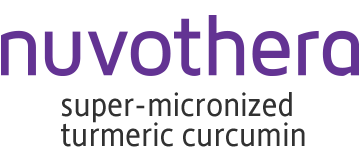What Does Psoriasis Look Like?
13 Aug 18

Do you have a problem where your skin is regularly, dry, itchy, and red? Do you ever find patches of bumps or flaky skin on your scalp, torso, or arms? If you answered ‘yes’ to either of these questions, you might suffer from an autoimmune or immune mediated disorder known as psoriasis. In most cases, the symptoms of psoriasis appear as lesions or irritated patches of skin, caused by an overabundance of white blood cells in your immune system.
This noninfectious autoimmune disease incorrectly communicates to the body that a perfectly healthy area of skin needs to be healed and is attacked by white blood cells. These white blood cells, also referred to as ‘T cells,’ build in that area creating an inflammatory response that affects the surrounding skin leaving it red, itchy and often covered with the characteristic build-up of scaly, flaky skin.
Identifying the Types of Psoriasis
There are five different types of psoriasis. Each one has slightly different symptoms or degrees of severity. That said, they all are skin conditions that generally begin as a cluster of tiny red bumps. Below, we will discuss these various forms of psoriasis so that you can distinguish the differences between them.
Plaque Psoriasis
Plaque psoriasis is the most common form of this condition and is characterized by thick patches of silvery scales, or plaques. Within these lesions, the skin becomes scaly and often breaks into white flakes. The most common areas plaque psoriasis appear are the scalp, knees, and elbows. However arms, legs, and torso are also common sites. However, it should be noted that plaque psoriasis can appear anywhere, and the size of the outbreak very much depends upon the severity of the condition.
Guttate Psoriasis
Guttate psoriasis is the second most common form of psoriasis. Instead of dry silvery plaques, it surfaces as small red dots—typically raised— that are mostly located on the torso. However, bumps can also appear on the legs, arms, scalp, ears, and face.
Inverse Psoriasis
Inverse psoriasis differs from the forms mentioned above since the rashes it produces are not typically raised. Instead, they appear in folds of skin, and the areas around them are smooth and non-scaly. They are often a bright red, rash-like form, with some splotching on the perimeter. The most common regions inverse psoriasis develops in are the buttocks, under the breasts, armpits, groin, and behind the knees.
Pustular Psoriasis
Considered to be one of the more painful forms of psoriasis, pustular psoriasis causes large, red, swollen patches of skin. These lesions then develop pus-filled bumps that raise before drying out. Once dried, the skin turns a yellow-brown, becomes scaly in texture, and then eventually cracks. The most common areas for pustular psoriasis to develop are on the bottom of the feet and the palms of the hands.
Erythrodermic Psoriasis
One of the rarer forms of psoriasis, erythrodermic psoriasis can affect the entire body, covering a larger than usual surface area of skin. The rashes are generally raised, red lesions that quickly spread into large patches. These patches are much larger than those that typically result from the more common forms of psoriasis.
Diagnosing Psoriasis
In the United States, over 8 million people suffer from psoriasis. Therefore, it is important to understand that you are not alone and that something can be done about it. This will not throw your healthcare provider for a loop.
Typically, all it takes for a dermatologist to diagnose psoriasis is a quick consultation of your medical records, and a noninvasive examination of your skin, scalp, and nails. On some occasions, a skin biopsy may be necessary, but that is generally a minor procedure that only requires local anesthetic.
Is Psoriasis Life Threatening?
While it may be uncomfortable or irritating, by and large, psoriasis is not a life-threatening disorder. For the vast majority of people with this skin condition, a topical treatment will help remove or mitigate the symptoms, and your doctor will institute a plan to handle future outbreaks. Erythrodermic psoriasis, however, can cause severe complications during its ‘flare-ups’ and will need further medical attention.
As you might imagine, psoriasis and its severity can vary from case to case. While most cases of psoriasis are benign, the more severe cases can be more debilitating but often controllable with the newer biologics. However, the rarer types such as erythrodermic psoriasis, can be life-altering.
If you are curious whether or not you have this skin condition, be sure to seek the help of a medical professional. There is no reason to wait and there a variety of psoriasis treatments and treatment systems available.

